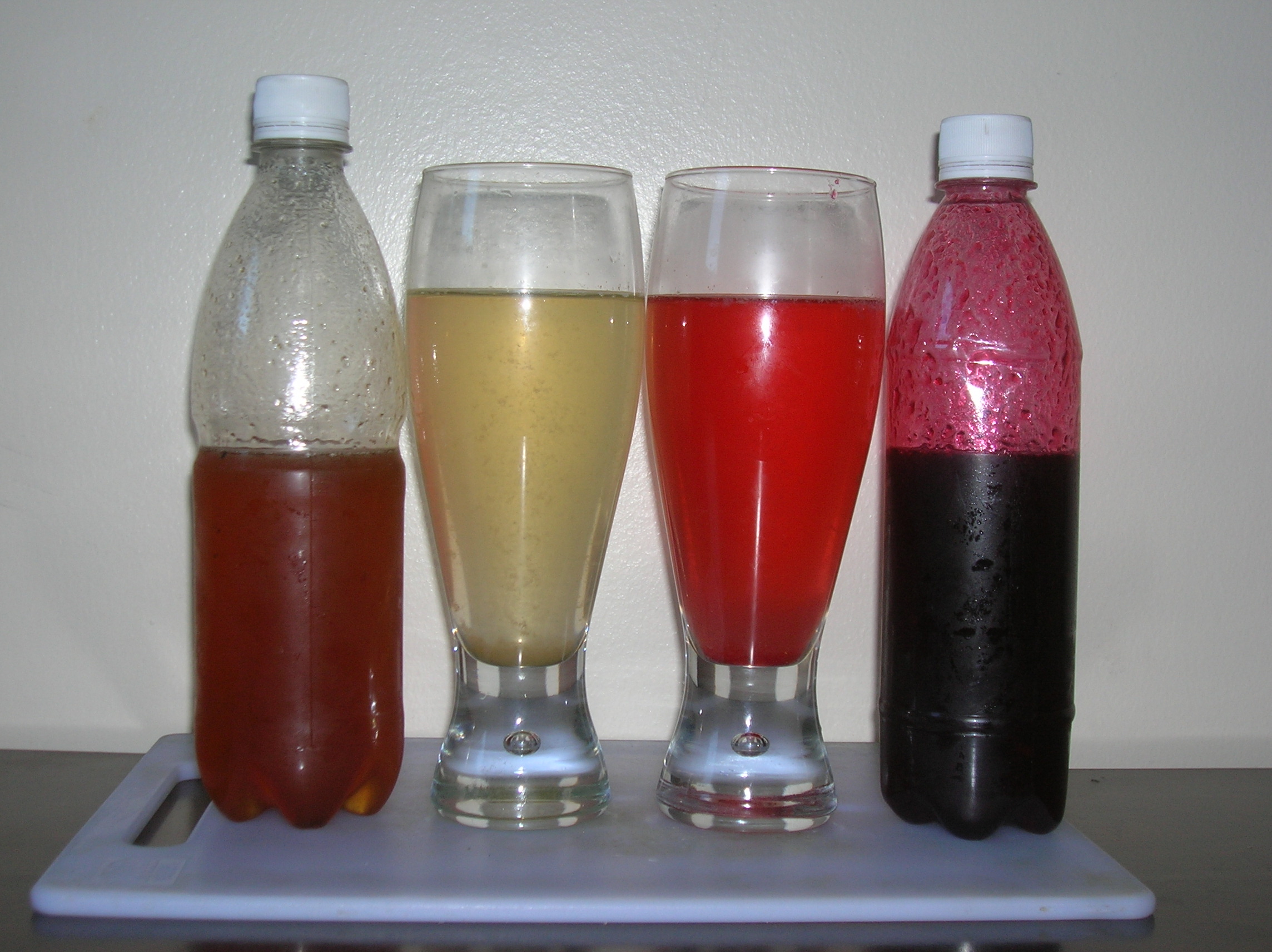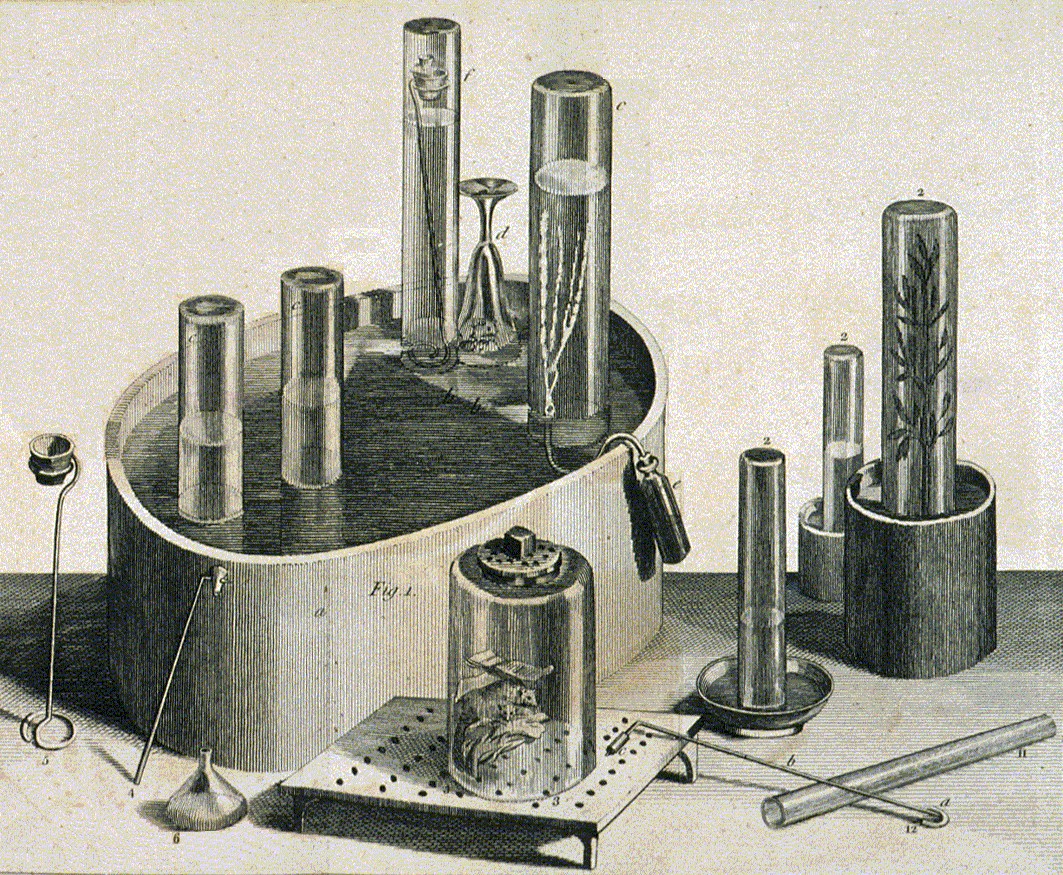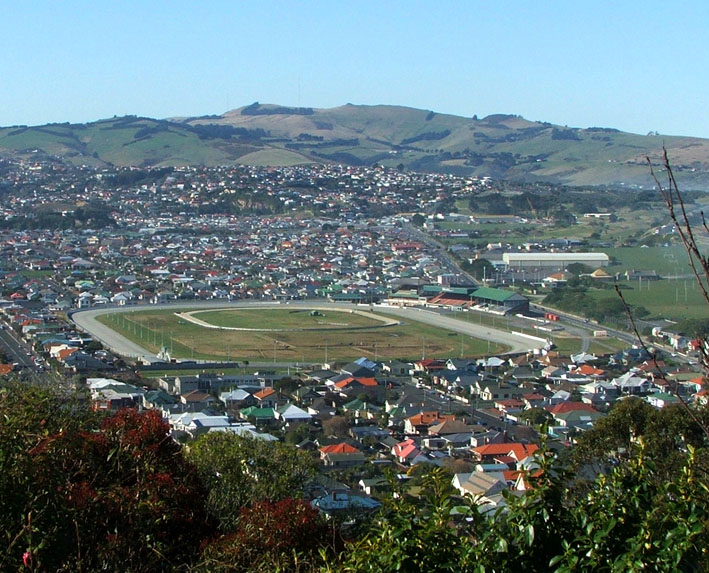|
Wests (drink)
Wests NZ is a manufacturer of soft drinks and cordials based in Dunedin, New Zealand. It is the oldest continuous manufacturer of soft drinks in New Zealand. History Wests began production in 1876 when Tom West created a range of cordials in the back of his grocery store in Maclaggan Street, Dunedin. These proved popular with the city' early settlers and provided growth for the fledgling business. Production expanded to include ginger beer in 1906, and in 1914 a purpose-built factory was constructed in Saint Kilda in the south of the city, which is still in use today. Products Wests today produces soft drinks and cordials in a range of flavours, many of them unique to the brand. These include Chocolade (chocolate-flavoured lemonade), RedZenergy (Energy drink), Cola and Raspberry, and the famous Pineapple and Pear. Wests also produce Milkshake and slushy syrups as well as Postmix concentrates and Soda Syrup refills in a large variety of flavours. Sugar Free Many of ... [...More Info...] [...Related Items...] OR: [Wikipedia] [Google] [Baidu] |
Dunedin
Dunedin ( ; mi, Ōtepoti) is the second-largest city in the South Island of New Zealand (after Christchurch), and the principal city of the Otago region. Its name comes from , the Scottish Gaelic name for Edinburgh, the capital of Scotland. The city has a rich Scottish, Chinese and Māori heritage. With an estimated population of as of , Dunedin is both New Zealand's seventh-most populous metro and urban area. For historic, cultural and geographic reasons the city has long been considered one of New Zealand's four main centres. The urban area of Dunedin lies on the central-eastern coast of Otago, surrounding the head of Otago Harbour, and the harbour and hills around Dunedin are the remnants of an extinct volcano. The city suburbs extend out into the surrounding valleys and hills, onto the isthmus of the Otago Peninsula, and along the shores of the Otago Harbour and the Pacific Ocean. Archaeological evidence points to lengthy occupation of the area by Māori prior to the ar ... [...More Info...] [...Related Items...] OR: [Wikipedia] [Google] [Baidu] |
New Zealand
New Zealand ( mi, Aotearoa ) is an island country in the southwestern Pacific Ocean. It consists of two main landmasses—the North Island () and the South Island ()—and over 700 smaller islands. It is the sixth-largest island country by area, covering . New Zealand is about east of Australia across the Tasman Sea and south of the islands of New Caledonia, Fiji, and Tonga. The country's varied topography and sharp mountain peaks, including the Southern Alps, owe much to tectonic uplift and volcanic eruptions. New Zealand's capital city is Wellington, and its most populous city is Auckland. The islands of New Zealand were the last large habitable land to be settled by humans. Between about 1280 and 1350, Polynesians began to settle in the islands and then developed a distinctive Māori culture. In 1642, the Dutch explorer Abel Tasman became the first European to sight and record New Zealand. In 1840, representatives of the United Kingdom and Māori chiefs ... [...More Info...] [...Related Items...] OR: [Wikipedia] [Google] [Baidu] |
Manufacturing
Manufacturing is the creation or production of goods with the help of equipment, labor, machines, tools, and chemical or biological processing or formulation. It is the essence of secondary sector of the economy. The term may refer to a range of human activity, from handicraft to high-tech, but it is most commonly applied to industrial design, in which raw materials from the primary sector are transformed into finished goods on a large scale. Such goods may be sold to other manufacturers for the production of other more complex products (such as aircraft, household appliances, furniture, sports equipment or automobiles), or distributed via the tertiary industry to end users and consumers (usually through wholesalers, who in turn sell to retailers, who then sell them to individual customers). Manufacturing engineering is the field of engineering that designs and optimizes the manufacturing process, or the steps through which raw materials are transformed into a final p ... [...More Info...] [...Related Items...] OR: [Wikipedia] [Google] [Baidu] |
Retailer
Retail is the sale of goods and services to consumers, in contrast to wholesaling, which is sale to business or institutional customers. A retailer purchases goods in large quantities from manufacturers, directly or through a wholesaler, and then sells in smaller quantities to consumers for a profit. Retailers are the final link in the supply chain from producers to consumers. Retail markets and shops have a very ancient history, dating back to antiquity. Some of the earliest retailers were itinerant peddlers. Over the centuries, retail shops were transformed from little more than "rude booths" to the sophisticated shopping malls of the modern era. In the digital age, an increasing number of retailers are seeking to reach broader markets by selling through multiple channels, including both bricks and mortar and online retailing. Digital technologies are also affecting the way that consumers pay for goods and services. Retailing support services may also include the provision ... [...More Info...] [...Related Items...] OR: [Wikipedia] [Google] [Baidu] |
Squash (drink)
Squash (sometimes known as cordial in British English, dilute in Hiberno English, and diluting juice in Scottish English) is a non-alcoholic beverage with concentrated syrup used in beverage making. It is usually fruit-flavoured, made from fruit juice, water, and sugar or a sugar substitute. Modern squashes may also contain food colouring and additional flavouring. Some traditional squashes contain herbal extracts, most notably elderflower and ginger. Drinks Squash is mixed with a certain amount of water or carbonated water before drinking. The amount of water added is to taste, with the squash becoming less strong the more it is diluted. As a drink mixer, it may be combined with an alcoholic beverage to prepare a cocktail. Citrus fruits (particularly orange, lime and lemon) or a blend of fruits and berries are commonly used as the base of squash. Traditional squashes in Britain are usually flavoured with elderflower, orange, lemon, or blackcurrant. Raspberry and blackberr ... [...More Info...] [...Related Items...] OR: [Wikipedia] [Google] [Baidu] |
Soft Drinks
A soft drink (see § Terminology for other names) is a drink that usually contains water (often carbonated), a sweetener, and a natural and/or artificial flavoring. The sweetener may be a sugar, high-fructose corn syrup, fruit juice, a sugar substitute (in the case of ''diet drinks''), or some combination of these. Soft drinks may also contain caffeine, colorings, preservatives, and/or other ingredients. Soft drinks are called "soft" in contrast with "hard" alcoholic drinks. Small amounts of alcohol may be present in a soft drink, but the alcohol content must be less than 0.5% of the total volume of the drink in many countries and localities See §7.71, paragraphs (e) and (f). if the drink is to be considered non-alcoholic. Types of soft drinks include lemon-lime drinks, orange soda, cola, grape soda, ginger ale, and root beer. Soft drinks may be served cold, over ice cubes, or at room temperature. They are available in many container formats, including cans, glass bo ... [...More Info...] [...Related Items...] OR: [Wikipedia] [Google] [Baidu] |
Milkshakes
A milkshake (sometimes simply called a shake) is a sweet beverage made by blending milk, ice cream, and flavorings or sweeteners such as butterscotch, caramel sauce, chocolate syrup, fruit syrup, or whole fruit into a thick, sweet, cold mixture. It may also be made using a base made from non-dairy products, including plant milks such as almond milk, coconut milk, or soy milk. Milkshakes originated in the United States around the turn of the 20th century, and grew in popularity following the introduction of electric blenders in the subsequent two decades. They became a common part of youth popular culture, as ice cream shops were a culturally acceptable meeting place for youth, and milkshakes became symbolic of the innocence of youth. Preparation Full-service restaurants, ice cream shops, soda fountains, and diners usually prepare the shake in a milkshake machine. At home, a blender is more commonly used. Milkshakes may be made from any flavor of ice cream; additional flavoring ... [...More Info...] [...Related Items...] OR: [Wikipedia] [Google] [Baidu] |
Soft Drinks
A soft drink (see § Terminology for other names) is a drink that usually contains water (often carbonated), a sweetener, and a natural and/or artificial flavoring. The sweetener may be a sugar, high-fructose corn syrup, fruit juice, a sugar substitute (in the case of ''diet drinks''), or some combination of these. Soft drinks may also contain caffeine, colorings, preservatives, and/or other ingredients. Soft drinks are called "soft" in contrast with "hard" alcoholic drinks. Small amounts of alcohol may be present in a soft drink, but the alcohol content must be less than 0.5% of the total volume of the drink in many countries and localities See §7.71, paragraphs (e) and (f). if the drink is to be considered non-alcoholic. Types of soft drinks include lemon-lime drinks, orange soda, cola, grape soda, ginger ale, and root beer. Soft drinks may be served cold, over ice cubes, or at room temperature. They are available in many container formats, including cans, glass bo ... [...More Info...] [...Related Items...] OR: [Wikipedia] [Google] [Baidu] |
Ginger Beer
Traditional ginger beer is a sweetened and carbonated, usually non-alcoholic beverage. Historically it was produced by the natural fermentation of prepared ginger spice, yeast and sugar. Current ginger beers are often manufactured rather than brewed, frequently with flavour and colour additives, with artificial carbonation. Ginger ales are not brewed. Ginger beer's origins date from the colonial spice trade with the Orient and the sugar-producing islands of the Caribbean. It was popular in Britain and its colonies from the 18th century. Other spices were variously added and any alcohol content was limited to 2% by excise tax laws in 1855. Few brewers have maintained an alcoholic product. Ginger beer is still produced at home using a symbiotic colony of yeast and a ''Lactobacillus'' (bacteria) known as a "ginger beer plant" or from a "ginger bug" starter created from fermenting ginger, sugar, and water. History As early as 500 BC, ginger was used as a medicine as well as for ... [...More Info...] [...Related Items...] OR: [Wikipedia] [Google] [Baidu] |
Saint Kilda, New Zealand
St Kilda is a suburb of the New Zealand city of Dunedin. A densely populated residential suburb, it lies on the southern part of the city's central plain, to the southwest of the head of the harbour and immediately north of Ocean Beach, parts of which (St Kilda Beach and Middle Beach) are within the suburb and form its major geographical feature. Saint Kilda's 2001 population was 5,904. Geography The suburb has fairly well-defined boundaries, having been a separate borough from 1875 until the time of local government restructuring in 1989. This borough was bounded by Forbury Road in the west, Bay View Road in the north, and Royal Crescent in the east, and at the time of its amalgamation into Dunedin City, was the most densely populated borough in New Zealand. Much of the borough's growth was between 1900 and 1930, during which time the population rose from around 1500 to 8000, slowly declining from that time to its current figure. Many of St Kilda's houses date from this period ... [...More Info...] [...Related Items...] OR: [Wikipedia] [Google] [Baidu] |
Foxton Fizz
Foxton Fizz is the name of a soda drink produced in Foxton, New Zealand. Background Back when there were over 230 independent soda factories across New Zealand, most small towns made their own local soda. So, the Foxton Fizz factory started up its machines in 1918, bringing their fizz to Foxton. Foxton Fizz is years old and one of the last independent soda companies in New Zealand. For an entire century, it has operated from the Foxton Fizz factory on 8 Whyte Street and delivering their fizz around New Zealand in their now iconic wooden crates. What started as a local drink soon became a familiar offering in lunch bars and hotels, and a staple at family gatherings and celebrations. The business began to decline after Coca-Cola began pushing their product into regional New Zealand. One initiative to try and counter the entry of Coca-Cola was offering a home drop service where customers would get a crate of bottles and then leave the empties out to be swapped for freshly-filled F ... [...More Info...] [...Related Items...] OR: [Wikipedia] [Google] [Baidu] |









